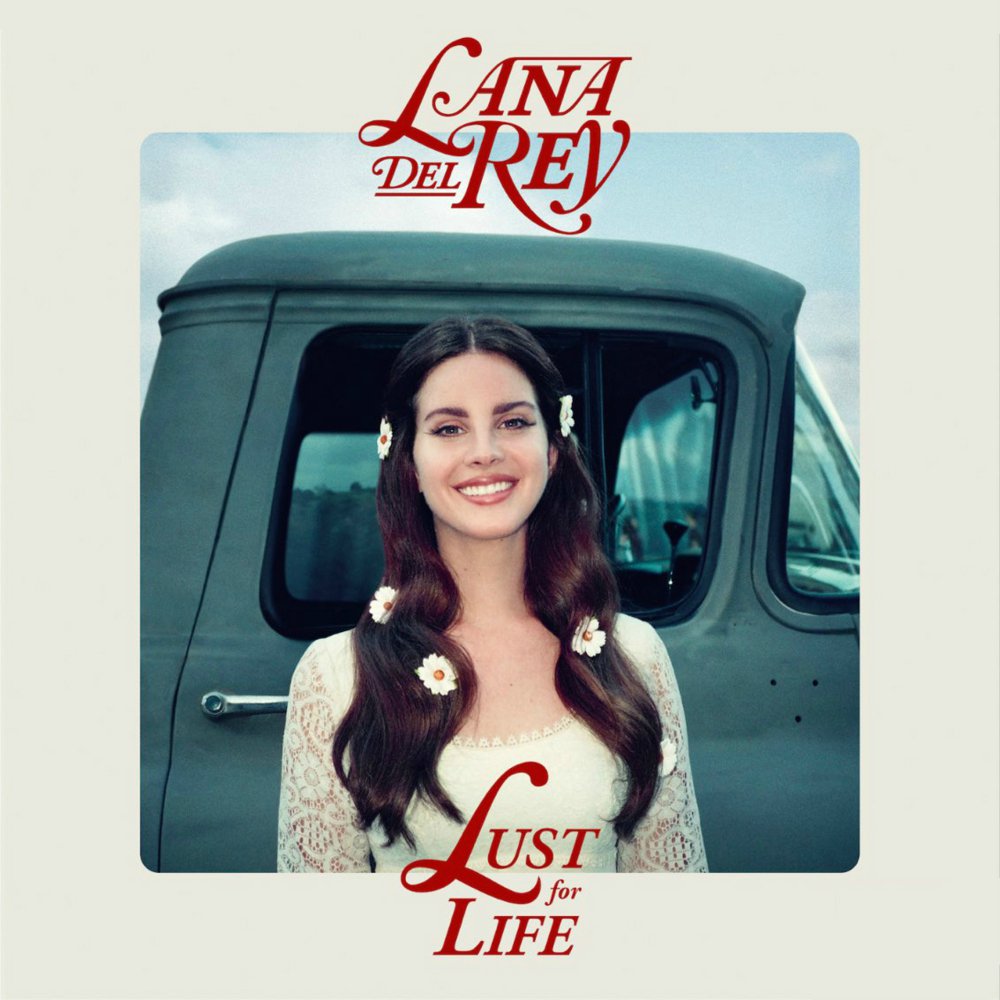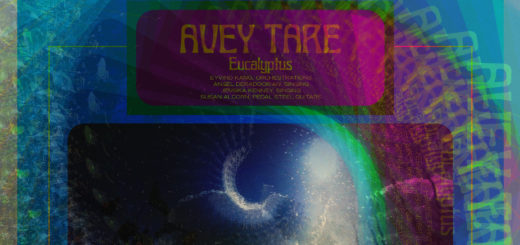LUST FOR LIFE by Lana Del Rey

Genre: Dream Pop, Art Pop
Favorite Tracks: “When The World Was At War We Kept Dancing,” “Beautiful People Beautiful Problems (featuring Stevie Nicks),” “White Mustang”
While listening to Lana Del Rey’s fourth studio album, LUST FOR LIFE, I continually asked myself one question: How did we get here?
The razor thin line that Lana Del Rey has walked between being a legitimate artist and an H&M advertisement come-to-life over the last five years is one of the great balancing acts of all time. Her strange, clay-molding introduction to the world aside (her previous musical career that her immensely wealthy father made sure to scrub the world and internet of, the too-early SNL performance that stunningly didn’t tank her career, and the initial high-profile remixes that led to her being a Top 40 success), Lana Del Rey’s career has been a topsy-turvy examination of pop’s strangest ambitions.
Things like the SNL performance and corporate feel of her brand have led Lana to gain countless detractors over the years, and while I don’t count myself as one of them, they certainly have understandable reasons to dislike her. From a critic’s standpoint, she has certainly had highs (“Video Games,” the underrated ULTRAVIOLENCE) and lows (“High on the Beach,” the messy debut BORN TO DIE), but regardless of your opinion of her music from a quality standpoint, it nonetheless stands alone amongst the current pop landscape. The most frustrating aspect of her last two albums, ULTRAVIOLENCE and HONEYMOON, respectively, were they never quite made her a bonafide “pop star” in any traditional sense—even if the radio-designated remixes of songs like “Summertime Sadness” and “West Coast” would lead you to believe otherwise.
But even knowing the backstory, her newest release, LUST FOR LIFE, doesn’t answer the question: How did we get here?
The easy answer to that question is “Trump,” a response that has already become a comfortable answer to some of the year’s difficult questions. LUST FOR LIFE isn’t the first “political” pop album we’ve received this year, but it is one of the more unlikely ones. Katy Perry’s slow-motion, career imploding WITNESS was wokeness of the worst kind, but as an outspoken, foot-in-mouth bonafide celebrity, her ambition to make a record that tackles political and social issues makes sense. Perry became one of the louder musical voices of the left during the campaign last year, resulting in her performance at the DNC for Hillary Clinton. But Lana Del Rey, up until very recently, never presented herself as either a political activist or political artist. Yet, if you listen to the noise surrounding the record’s release, LUST FOR LIFE is indisputably a political record. As she told Elle UK, “I think it would be weird to be making a record during the past 18 months and not comment on… [the political landscape].”
Removing the artist-fed hype for even a moment, you’d of course be forgiven for not reading into this album as something political, especially with song names like “Groupie Love,” “Coachella—Woodstock In My Mind,” “Summer Bummer,” and “13 Beaches.” And for an artist whose career transparently reflects a record company-manicured image, this seems par for the course. Are there political songs on LUST FOR LIFE? Absolutely. But at a bloated hour-and-12-minute runtime, they make up a small fraction of the substance of the record. It’s a shame in many ways that Lana’s political ambitions didn’t guide the entire record; her desire to perpetuate that narrative is reflective of how proud she is of these songs, and she should be. For the first time in her career as Lana Del Rey, she has something meaningful fueling her music, which undermines the fact that “Cherry,” “13 Beaches,” “Love,” and “White Mustang”—despite featuring paint-by-number themes and lyrics—are her most well-equipped, Top 40-sounding songs yet. “Summer Bummer,” featuring A$AP Rocky and Playboi Carti, as well as “Groupie Love” (also featuring A$AP Rocky), continue to speak to this fine tuning of sounds and ideas, with Rocky embracing Lana’s fashion-rap ready instrumentals. These songs seem like natural evolutions of the Lana Del Rey sound and brand, and even if they’re instantly forgettable and lazy sounding, this is what we have been looking for Lana to create ever since BORN TO DIE was released.
That evolution is rendered obsolete by the time we hit “Coachella—Woodstock In My Mind,” a track that isn’t blatantly political, but does ask a question the rest of the record begins to try and answer: how can we feel positive in an uncertain world? For the rest of the record, we see a toned down and, at times, subversive line of answering for that question. “God Bless America—And All The Beautiful Women In It” isn’t the post-Women’s March anthem I think anyone was asking for, but it hardly misinterprets the momentous achievement of that day. “When The World Was At War We Kept Dancing,” in spite of its on-the-nose title, is one of Lana’s finest tracks, internalizing the “end of America” feeling she explored on “Coachella—Woodstock in My Mind.” The songwriting with these songs, as well as the two closing tracks, showcase how focused Lana CAN be on things other than paradise, boys, and summer, and the songs sound all the more fascinating with her listless, femme fatale vocals.
But sadly, these few tracks don’t define the record. Even with guests like Stevie Nicks and Sean Ono Lennon on the back half, presumably the types of artists primed to make grandiose political statements, the opportunity is wasted on more standard love songs, albeit the two best love songs on the album. LUST FOR LIFE features some of Lana’s best songs, but at 16 tracks it was never going to sustain itself on consistent themes. Even now, after having heard the record a few times, I find myself skipping most of the beginning, uninterested in her turn towards Top 40 hits, and instead looking to embrace the simple yet thoughtful second half. After years of wanting Lana to just embrace the pop charts, she finally did—and it feels empty.
So while “Trump” is a fair enough answer to the question “How did we get here?,” I’d like to quote critic Simon Reynolds from Lizzy Goodman’s excellent new book MEET ME IN THE BATHROOM: REBIRTH AND ROCK AND ROLL IN NEW YORK CITY FROM 2001 – 2011:
“Bohemia generally had a problem with the idea of being earnest. During the post-punk era there was a lot of political stuff, but going through the ‘80s into the ‘90s, irony, a kind of super-cool disengagement, became more the response to things. It’s quite hard to do politics as a musician. You risk being very obvious and being very earnest—all kinds of things you don’t want to be. Most bands would either do it very obliquely or they would just avoid the area altogether.”
Lana’s attempt at earnestness is admirable, but it’s also likely signaling a shift back to the obviousness of Nixon-era rock and roll rather than the subdued Bush-era Reynolds is more directly addressing. LUST FOR LIFE wants to be all things to all people, a sometimes political record, but also the radio-ready album her fans have been waiting for, succeeding and failing at both goals in completely equal measure. Even without being a good album, LUST FOR LIFE is a fascinating project for a continually fascinating artist.
Verdict: Do Not Recommend




Agree agree agree with all of this.